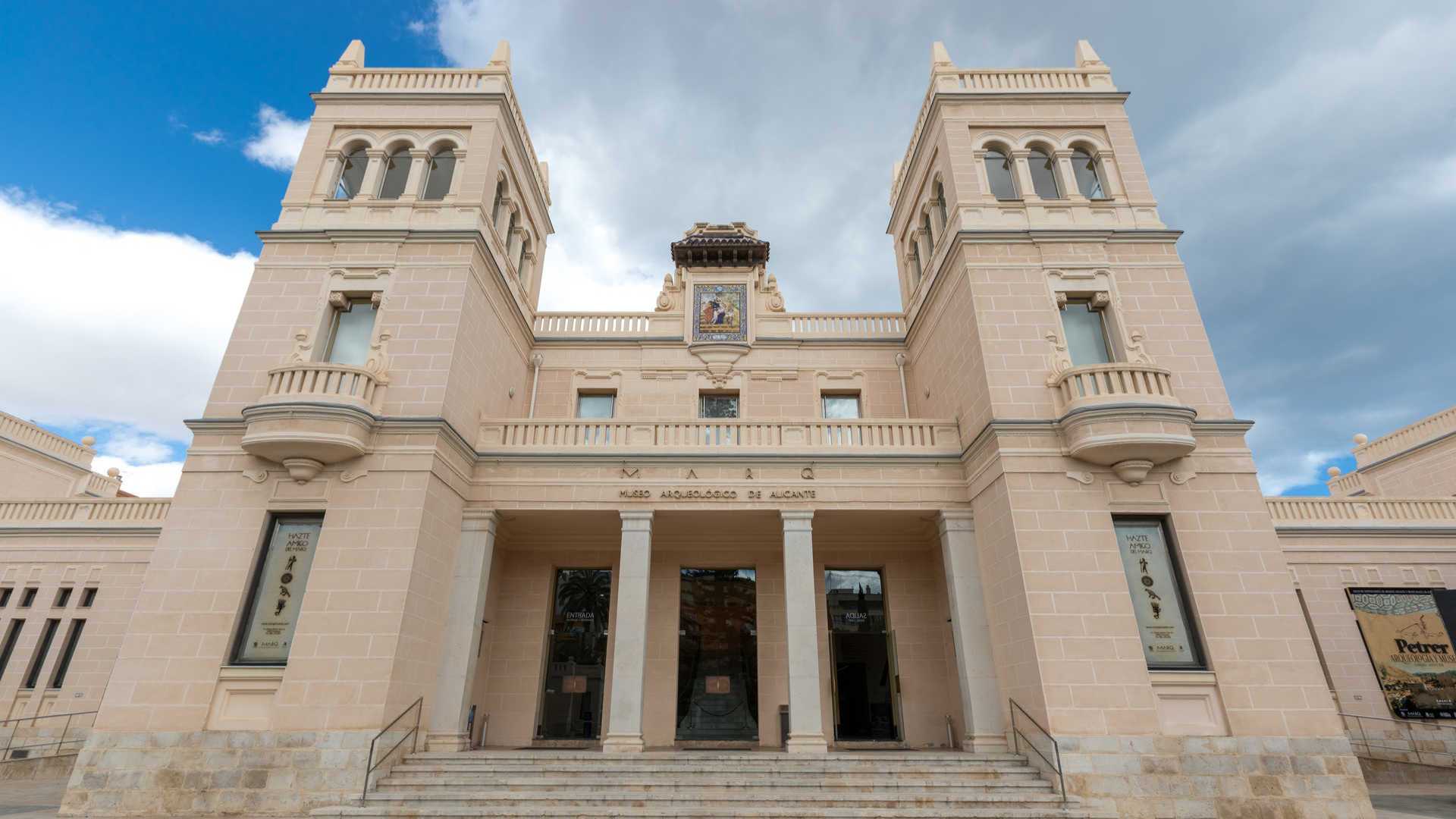MARQ in Alicante, a Walk Through Archaeology
Among the more than 80,000 items displayed at the Archaeological Museum in Alicante, or MARQ, are the most prominent examples of Costa Blanca’s cultural richness. The heritage from people such as the Iberians or the Romans is crucial to understanding the provincial origins.
One of MARQ’s greatest attractions is the modern touch in its exhibition areas, where audiovisual media are used to make the experience as educational as possible and to attract children.
Furthermore, the museum does not stop at the walls of its main building but offers guided tours to the main archaeological excavations in the province of Alicante to experience them in situ, a new and innovative museum experience.

The Building Housing the Archaeological Museum in Alicante
The Provincial Archaeological Museum in Alicante, inaugurated in 1932 by Niceto Alcalá Zamora, was originally located on the ground floor of the Diputación Palace in the historic center. However, the entrance of the 21st century showed that the museum needed more space.
The chosen site was the provincial hospital, designed by architect Juan Vidal in 1924, in the current neighborhood of Pla del Bon Repós. It was a building of significant proportions with eight long pavilions, a main structure, and two heads at each end, following classical lines.
In the year 2000, it was decided to repurpose the building, and after adapting the building with extensive internal restoration, MARQ was moved to this location. Its innovative museum experiences have been rewarded by the European Museum Forum with the ‘European Museum of the Year 2004’ award, an acknowledgment that only museums like the Guggenheim in Bilbao or CosmoCaixa in Barcelona have in Spain.
MARQ Museum Alicante, a Journey Through History
This museum presents a new vision of archaeology, moving away from the traditional exhibition system to become the first Archaeological Museum of the 21st century. It proposes an experience that is both educational, thorough, and fun. For example, some of its rooms offer the opportunity to learn how to work on an excavation and which techniques are used depending on the environment.
Sometimes, special tours are arranged to MARQ’s basements to delve deeper into the museum’s work and learn about the entrance or exit departments, amphora facilities, storage, research department, or restoration laboratory. It is a unique opportunity to discover the inner life of this institution.
A tour through MARQ begins by showcasing the rich geography of Alicante, with the variety of its landscapes and soils. From that moment, the chronological route through the different rooms teaches us about the various cultures that have inhabited the area:
Prehistory Room
One must travel back to the Middle Paleolithic period, 100,000 years ago, to find the first human traces in Alicante. You can view up to a thousand items divided into different themes such as hunting and gathering, agriculture, or the first metals. The room concludes with the Oriental period in the 8th century BC, where contact with the Phoenicians marks the beginning of the Iberian culture.
Iberians Room
Although the Iberian peoples in the South and Levant of the Iberian Peninsula had some common characteristics, these groups were not homogeneous, and there were many differences between them. In the province of Alicante, the contestanos stand out, who lived in the region of Contestania. The exhibition area strives to present their important archaeological excavations. Religion, economy, art, or burial rituals are some of the aspects we learn about the Iberians in this room, led by ‘Dama de Cabezo Lucero,’ also known as ‘Dama de Guardamar.’
Romans Culture Room
The items in this collection are divided into three different blocks: Romanization, Rome in the Empire, and Christianity or the late Roman world. In this area, the large screens projecting scenes from life in the city of Lucentum, now Tossal de Manises in the Albufereta neighborhood, are highlighted. One can see the influence of this ancient city on Alicante.
Middle Ages Room
Alicante’s medieval period focuses on the coexistence of different peoples with different religions over eight centuries. Far from clichés that paint this period as a “dark age,” it attempts to give a realistic picture of the Islamic, Christian, and Jewish cultures that coexisted amidst their resource development.
Modern and Contemporary Culture Room
This covers a very broad and complex period from 1500 to 1931. Therefore, it is divided into several phases to present it as best as possible: The Crown’s Power (1500-1808), the Constitutional Regime (1808-1874), and From Monarchy to Republic (1874-1931). The final part is the moment when the Provincial Archaeological Museum was inaugurated in the Diputación Palace in 1931. Over 300 items are displayed in this room to give voice to nearby Alicante.
When this tour is completed, you can explore the thematic rooms. In the first, called ‘Buried in a Church,’ a hypothetical scene is presented, a Gothic church or monastery, whose oldest remains date back to the 2nd century BC, after which the past is known.
In the next room, ‘Buried Underwater,’ the same process continues to present archaeological work related to underwater excavations. A third case is exhibited in the room ‘Buried in a Cave,’ where the thorough documentation work carried out to interpret human traces in this environment is shown.
Don’t forget one of MARQ’s most interesting initiatives: the guided tour to various archaeological excavations to experience them up close. Sanctuarium of Pla de Petracos, Tossal de Manises, or Illeta dels Banyets will help place the museum’s items in their original locations.
